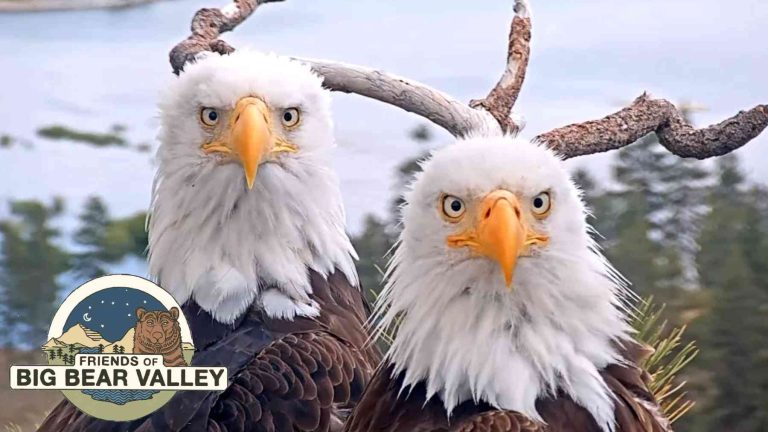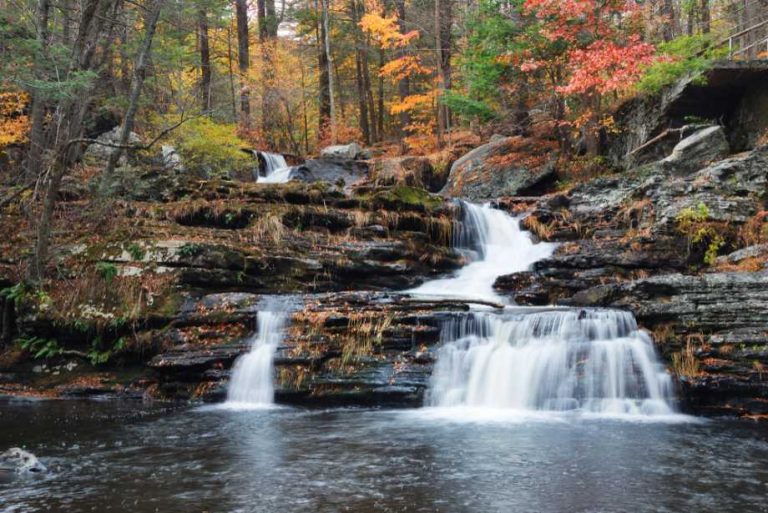Growing up in Big Bear, I was always surrounded by the towering pines, the picturesque mountains, and, of course, Big Bear Lake. But I remember one day, during a casual chat with a friend, the question popped up: Is Big Bear Lake man-made?
At that moment, I realized I didn’t know the answer! Of course, I’d seen the lake all my life, but something was fascinating about this question, so I dug into the history of the lake.
As it turns out, Big Bear Lake has a story that goes way beyond its current role as a serene destination for tourists and locals alike. It’s a man-made marvel with a rich history, and there’s so much more to learn about it.
If you’ve ever wondered about the lake’s origins, its significance, and how it came to be the stunning natural treasure it is today, I’ve got you covered. Let’s take a deep dive into 15 fascinating facts about Big Bear Lake!
1. Is Big Bear Lake Man-Made?
Yes, Big Bear Lake is man-made. It was created in 1884 when the Bear Valley Dam was completed. The primary goal was to provide water to the local areas, but over time, it evolved into the recreational hub that we all know today. So while the lake looks entirely natural, its origins are anything but.
The Bear Valley Dam was constructed by the Bear Valley Water Company to capture the waters of the Santa Ana River and its tributaries. The lake’s water levels can fluctuate, but it has remained a critical water source for the surrounding areas while also offering a variety of outdoor activities like fishing, boating, and swimming.
2. The Lake’s Creation Was for Water Storage
When USA first created the lake, it wasn’t meant for recreation. The primary purpose was to provide a reliable water supply for the growing agricultural community in Southern California. The construction of the dam was key to regulating the flow of water to farms in the region.
However, over time, Big Bear Lake’s stunning natural beauty and the surrounding wilderness turned it into a destination for tourists and outdoor enthusiasts.
3. Big Bear Lake Was a Vital Resource for Early Settlers
In the late 1800s, settlers were beginning to move into the Big Bear Valley. The area’s mountainous landscape was difficult to navigate, and the natural springs and streams were unreliable.
Big Bear Lake became essential for farming and cattle ranching, as the water supply was consistent and reliable. Without the lake, the area’s early economy would have struggled to thrive.
4. The First Boat Ride Was in 1885
Just one , the first boat ride took place within one year of creating the lake. Big Bear Lake quickly became a popular spot for recreation, and it wasn’t long before visitors started to enjoy the lake’s beauty by boat.
Early tourists would take leisurely boat rides to enjoy the natural surroundings, a tradition that continues today.
5. It’s One of Southern California’s Largest Lakes

Big Bear Lake covers 2,900 acres, making it one of the largest lakes in Southern California. It has a shoreline that stretches over 23 miles, providing plenty of space for outdoor activities like fishing, boating, kayaking, and paddleboarding.
The lake offers views of the surrounding San Bernardino Mountains and is a prime location for enjoying the great outdoors.
6. The Lake Has a Variety of Fish Species
Over the years, Big Bear Lake has become a popular fishing destination. In fact, the lake is stocked with several fish species, including rainbow trout, largemouth bass, and catfish.
Anglers travel to the lake year-round to try their luck at fishing, whether it’s on a quiet winter morning or a sunny summer day.
7. The Dam Was Originally Built for Water Diversion
The Bear Valley Dam was originally built to divert water from the Santa Ana River and its tributaries into the lake.
The lake’s size was controlled by how much water the dam allowed through, regulating water distribution for the surrounding farming and residential areas. The dam played a critical role in sustaining the early community of Big Bear and its development.
8. The Dam Was Rebuilt in the 1930s
In the 1930s, after several decades of use, the Bear Valley Dam was rebuilt to accommodate increasing water needs. They upgraded and reinforced it to ensure it could continue to function as the primary water source for the region.
The new dam design allowed for improved water storage and distribution, ensuring that Big Bear Lake could continue to serve its purpose for years to come.
9. Big Bear Lake is a Hub for Year-Round Recreation
Now, Big Bear Lake is a hub for year-round recreation. Whether it’s boating, fishing, kayaking, or paddleboarding in the warmer months or snow activities like skiing and snowboarding in the winter, the lake’s beauty and versatility offer something for everyone.
The community has embraced the lake as both a recreational and economic asset, making it one of Southern California’s most beloved destinations.
10. The Lake Hosts Various Events Throughout the Year
Big Bear Lake isn’t just about the natural beauty and outdoor activities—it’s also home to a variety of exciting events. From the Big Bear Lake Oktoberfest to the summer concert series and boat parades, the lake plays a central role in the town’s seasonal festivities.
It’s the perfect spot to visit year-round, with something always happening to make your experience special.
11. The Lake Offers Stunning Views and a Picturesque Environment
One of the most impressive aspects of Big Bear Lake is its setting. Surrounded by dense forests and towering mountains, it’s a picturesque place that invites people to stop, relax, and take in the stunning views.
The lake offers an escape from city life, giving visitors a chance to reconnect with nature in a truly serene environment.
12. It’s a Popular Spot for Hiking and Wildlife Viewing

Big Bear Lake is not only a place to play on the water, but it’s also a haven for hikers and wildlife enthusiasts. The surrounding San Bernardino National Forest is home to countless hiking trails, each offering spectacular views of the lake and the surrounding mountains.
In addition, you can spot Big Bear’s wildlife—including black bears, mule deer, and coyotes—in the area.
13. The Lake Has Become a Popular Destination for Boating
Boating is one of the top activities enjoyed on Big Bear Lake. Whether you’re renting a pontoon boat for a leisurely afternoon with friends or engaging in more adventurous activities like waterskiing and wakeboarding, the lake offers plenty of opportunities for water sports.
The marina provides boat rentals and offers a chance to enjoy the water without the hassle of owning a boat.
14. Big Bear Lake is Essential for the Local Ecosystem
While Big Bear Lake is man-made, it serves a vital role in the local ecosystem. The lake supports a variety of wildlife and plants, creating a balanced natural environment.
The surrounding trees and mountains provide habitats for birds and animals. The lake itself serves as a critical water source for both wildlife and the people who live in the area.
15. Big Bear Lake Will Continue to Evolve
Big Bear Lake has been evolving since its creation, and it will continue to do so as the community grows. With the increase in tourism and the constant efforts to preserve the lake’s natural beauty, Big Bear Lake will remain a beloved destination for generations to come.
FAQ: Big Bear Lake and Its History
1. When was Big Bear Lake created?
Big Bear Lake was created in 1884 with the completion of the Bear Valley Dam. It was originally built to provide water to the surrounding agricultural areas.
2. Is Big Bear Lake man-made?
Yes, Big Bear Lake is man-made. It was created by the construction of the Bear Valley Dam in 1884. The purpose was to help with water distribution for the region.
3. Can you swim in Big Bear Lake?
Yes, you can swim in Big Bear Lake during the warmer months, although the water can be quite chilly even in summer. Be sure to follow any posted rules and regulations for water activities.
4. What types of fish can you catch in Big Bear Lake?
Big Bear Lake is home to several fish species. It includs rainbow trout, largemouth bass, and catfish, making it a popular destination for anglers.
Big Bear Lake’s Enduring Beauty
Big Bear Lake is more than just a beautiful sight. It’s a historical and recreational treasure that continues to provide joy and opportunities for locals and visitors alike. You can take in the stunning views, enjoying the outdoor activities, or learning about its rich history. Big Bear Lake is a place that brings people closer to nature and adventure. So, the next time you visit, take a moment to appreciate not just the scenery but the fascinating story.













